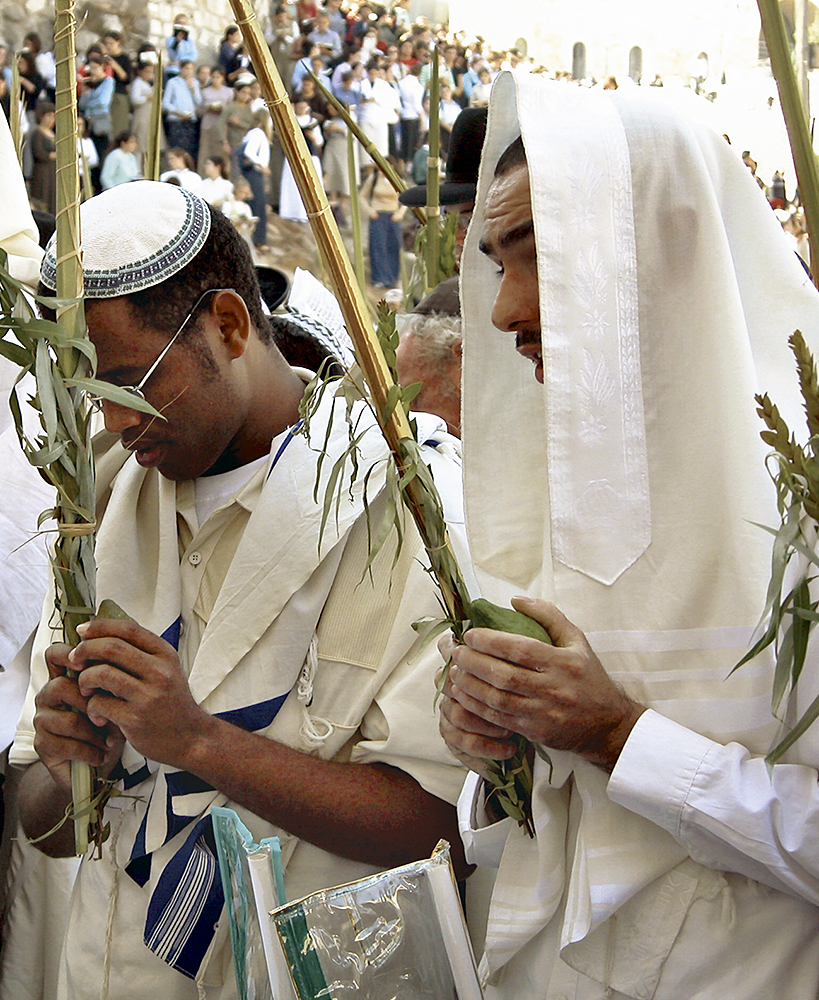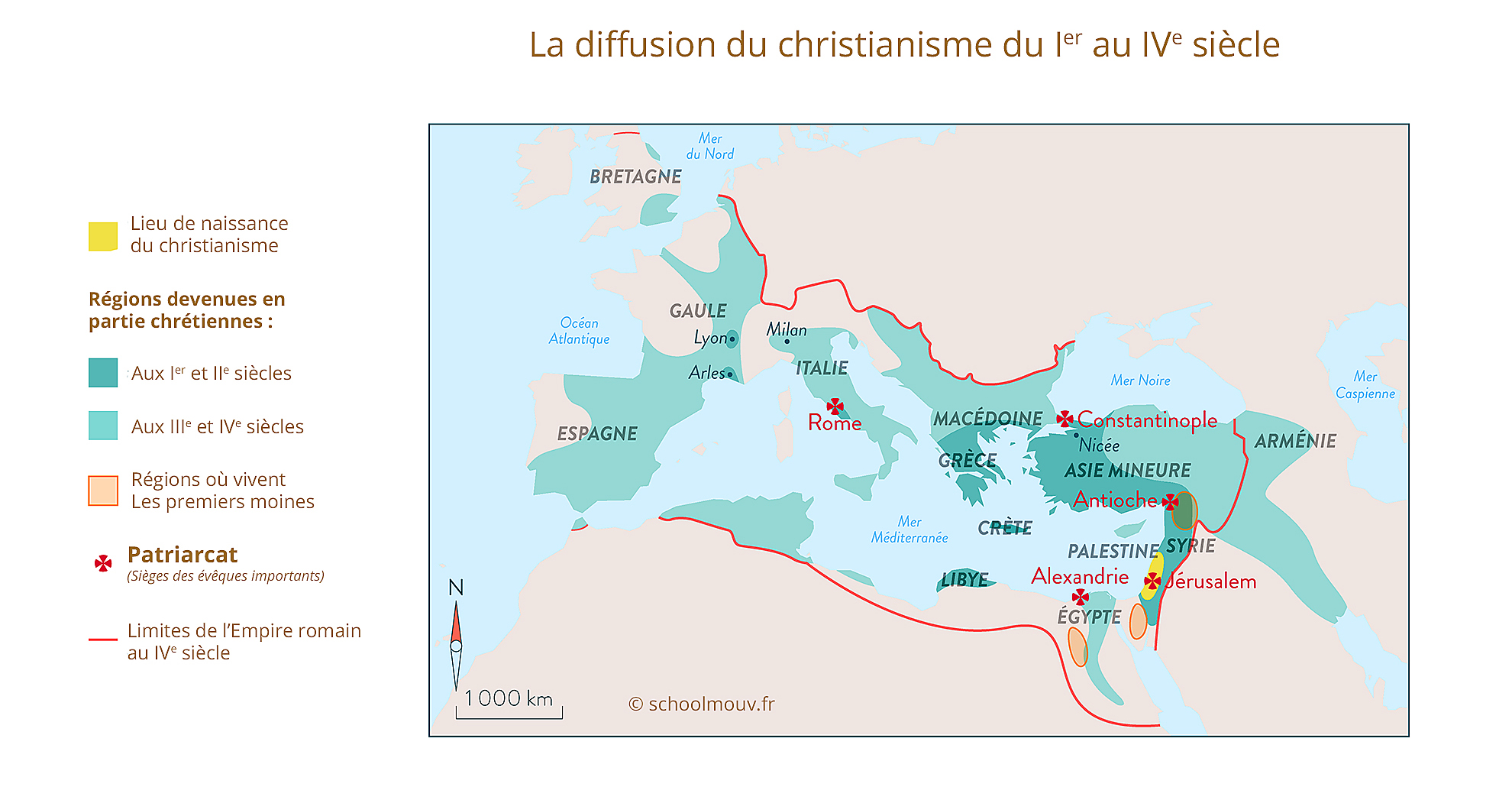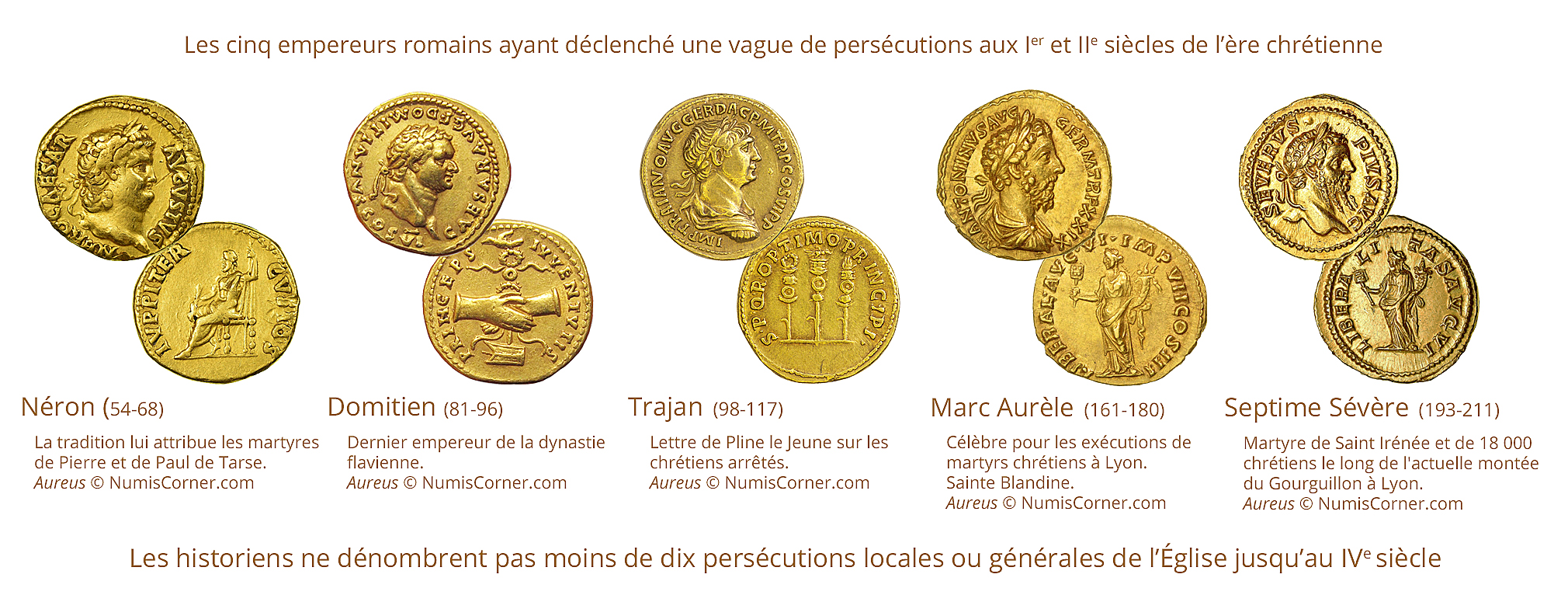
Bible, History, Archaeology
Bible,
History,
Archaeology
The beginnings of Christianity
1st - 2nd centuries
How did the’ÉDid the Gospel after Christ's death and resurrection lead to the birth of Christianity?
Evangelization
From the time of Jesus
The model is obviously the action of Christ himself. The group of disciples is itinerant. Jesus travels «from place to place», staying no more than two or three days in any one place, in order to proclaim the message of salvation to as many people as possible. Once formed, the disciples are sent out two by two with very strict instructions: ... take no money with you, nor a stick to defend yourself... (Luc 10,3-12 ; Matthieu 9,8-14). For the moment, the announcement is reserved for Israel.
Alongside this limited group of itinerant disciples was a larger group of sedentary supporters. They continued to live at home, receiving the message and providing material support. Such was the case with Martha, Mary and Lazarus in Bethany, Judea, or with Zacchaeus, or Simon the leper, for example.
Memories of Jesus were therefore passed on in the domestic sphere on the one hand, and on the other to the disciples who preserved the words of Jesus, all this in a context of orality that nevertheless served as a reference and standard.
A tomb from the Herodian period, Jerusalem. © AdobeStock 31377728.
After the Lord's death and resurrection
The mandate to proclaim the Gospel is extended to the whole world.
What were the milestones?
On the Day of Pentecost, Peter's speech opened the way to the universality of salvation, while the first community of believers was formed in Jerusalem, made up of Jews and Hellenists from the Diaspora. The death of Stephen (Acts 7) is the signal for the dispersal of «all but the apostles...» (Acts 8.1) to Judea, Samaria, Phoenicia, Cyprus and Antioch.
Some of the first disciples then became itinerant missionaries, demonstrating the glossolalia (= speaking in tongues) and what Paul calls «the signs of the apostle»: patience in trials, prodigies, miracles (2 Corinthians 12,12), which are manifestations of the Spirit's power and authentication of the apostle as God's messenger at the founding of a group of believers.
With Corneille's conversion
The proclamation of the Gospel opens up to non-Jews.
It is Luke, in the Acts of the Apostles, who provides us with the most information on the beginnings of evangelization outside Israel; but a large part of the mission remains excluded from his narrative, and we know very little about the mission in Eastern Syria, the origins of the Church in Rome, Alexandria and even Antioch, the starting point of the apostle Paul's missions.
Image opposite: a general view of the Forum in Rome. AdobeStock 13522390.
Antioch, founded in 300 BC, became the capital of the province of western Syria in 64 BC. It was a very wealthy, densely populated city, the third-largest capital of the empire after Rome and Alexandria. There was a large Jewish colony here, estimated at around 10 % of the population, highly influential and enjoying privileges (according to the historian Flavius Josephus). It was in Antioch that the «Good News» was addressed to the Greeks, many of whom were converted (Acts 11,21). The example of the disciples in Antioch was decisive for the growth of a church made up of Jews and non-Jews, with prodigious manifestations of the Spirit. It was alsoit was in Antioch that the disciples were first called Christians. The term is formed from a proper noun, Christos, and a disinence (-ianoi in Greek or -ianus in Latin), indicating the allegiance or loyalty of the bearer of the name. The Roman historian and senator Tacitus (58-120 A.D.) asserts that it was the people who called them this, perhaps as a sobriquet.
What is the target audience?
We can refer to the pattern used by the apostle Paul: he always starts by preaching in the synagogues, where he wins over some of those present, and then, faced with the rejection and refusal of the other Jews, he turns to the Jews. Kind (from Latin Gentiles «who belongs to a nation», the usual translation of Hebrew Goyim, nations, which comes to mean non-Jews).
Image opposite: In front of the Kotel, Orthodox Jews celebrate the Feast of Tabernacles (Sukkot).
It commemorates the Hebrew people's sojourn in the desert © Todd Bolen.
Next in line are Diaspora Jews. They gathered to read from the Torah, accompanied by homilies and exhortations, and to discuss the community's problems. The term« synagôgê »In the beginning, the word "meeting" referred to the meeting itself, before indicating the place where it was held. Those who could afford it would make pilgrimages to Jerusalem on the occasion of the Three Great Jewish Feasts (Shalosh Regalim), Passover (Pesach), Pentecost (Shavuot) and Feast of Tabernacles (Sukkot), They had their own synagogues (Acts 6,9). There were some fifteen synagogues in Rome, of which at least five date back to the 1st century. Three were founded by freedmen, and some were under the patronage of princes of the imperial house.
We also deal with proselytes. A proselyte is someone who, etymologically, «came to, approached». He has embraced Judaism and all its obligations: this is certainly the case of the Ethiopian eunuch who came to Jerusalem «to worship God»; this category included many women of high status. However, these people were not considered Jews, even though their status meant that they had to observe the commandments concerning circumcision, food and rules of purity, which had the disadvantage of isolating them socially.
Next to them are the« God-fearing » (theosebeis): these are Kind who sympathize with Judaism without fully embracing it. This status only obliged them to observe Noachic laws (Genesis 9,1-11), i.e. a kind of natural law that God asks all human beings to respect; there are several examples of this: Justus in Corinth, where Paul is staying, Lydia in Thyatira, or Phoebe in Cenchrea... This category will be very important for the spread of the Christian faith outside Israel.
Last but not least, the people we want to reach are the Kind, that is, all non-Jewish populations, also known as pagans or barbarians.
Origin of believers
Onomastics reveal the diversity of the believers' origins: slaves (Onesimus), freedmen (Lucianus), soldiers (Cornelius), artisans and merchants (Lydia, Aquilas and Priscilla), teachers (School of Tyranus), notables (Erastus, city treasurer), people close to the court (Menahen, raised in the company of Herod Antipas)...
However, most of the faithful seem to be of modest origins: «...there are neither many mighty nor many noble...» writes Paul (1 Corinthians 1,26).
How?
We can imagine these first Christians scattered in small groups, on the bangs of the synagogues, grouped together in «houses» (oikoï). These are domestic groups made up of all the people living together under the authority of a family head. These were the «domestic churches», the pillars and relays for spreading the Gospel message. Believers gathered here for worship and the Lord's Supper, with charismatic manifestations.
 Image opposite: one of the oldest early Christian baptisteries in France, unearthed on the site of the ancient town of Cemenelum (in present-day Nice). It dates from the 4th - 5th centuries. You can clearly see the steps that allowed the neophyte to descend into the vat to be immersed, according to the custom of the 1st-century Church.
Image opposite: one of the oldest early Christian baptisteries in France, unearthed on the site of the ancient town of Cemenelum (in present-day Nice). It dates from the 4th - 5th centuries. You can clearly see the steps that allowed the neophyte to descend into the vat to be immersed, according to the custom of the 1st-century Church.
Archaeological Museum, Nice-Cemenelum. Theo Truschel.
We know a number of these from Paul's greetings in his Epistles, for example to the «house of Stephanas» and to the church (ekklésia) who meet there. In Rome, in addition to the weaver's workshop run by Aquilas, Paul knows of a group close to the court, belonging to the household of the imperial freedman Narcissus, and another in the house of an Oriental immigrant, Aristobulus, perhaps from the household of Herod (Romans 16,10-11 ; Philippians 4,22).
We therefore have evidence that a local church was made up of a limited group of people meeting in private homes. These groups had the status of private associations, well attested in the Roman world, notably for the celebration of religious services. In certain circumstances (the visit of a missionary or the reading of a letter), the various churches would all meet together, for example in Corinth: «... the whole church meeting at Gaius» house..." (Romans 16,23).
Organized identically, sharing the same faith, these churches are nonetheless autonomous and sometimes very different in their customs and aspects of discipline.
A decisive factor in the success of Christianity was undoubtedly its charitable activity: aid for the poor and widows, support during famines, epidemics and earthquakes, guaranteed burial for the most destitute... the sharing of resources attracted the faithful.
Geographical spread of churches in the 1st century
We know only the regions and localities attested by the sources, as local churches must have been more numerous. Geographical expansion is best known for the area of Asia Minor, where it can be traced from generation to generation through New Testament texts spanning almost a century, and the writings of the Apostolic Fathers; we also have the remarks of Roman governors or Greek intellectuals, as well as the contribution of archaeology.
Churches dating back to around 100 A.D. all those found in the Acts of the Apostles, the Epistles and the Apocalypse including some major centers: Jerusalem, which lost some of its importance after 70 A.D. but remained highly honored, Antioch (as early as 30 A.D.) and Rome (around 40 A.D.), while Alexandria and Edessa came later.
Image opposite: a reconstruction of Jerusalem in the time of Herod the Great at the Israel Museum, Jerusalem. DR.
Geographical areas are as follows: Palestine, Phoenicia, Syria, Cyprus, all the Roman provinces of present-day Turkey, and Greece.
For the number of followers, Although it's very difficult to quantify, what is certain is that the majority of Christians were concentrated in urban areas.
 The Church of Antioch
The Church of Antioch
St. Peter's Church (Aramaic: Knisset Mar Semaan Kefa, Turkish: Senpiyer Kilisesi, St. Peter's Cave Church) near Antioch (now Antakya), Turkey, features a cave carved out of Mount Starius, 13 m deep, 9.5 m wide and 7 m high. According to tradition, this grotto, probably used by 1st-century Christians, is one of the oldest churches in Christianity. The oldest surviving parts, fragments of frescoes and mosaics on the floor, date from at least the 4th or 5th century.
The life of the Church at Antioch is recounted in the Acts of the Apostles (11:25-27):
... Barnabas then went to Tarsus in search of Saul (11:25), and when he found him, he brought him to Antioch. For a whole year, they met at church assemblies and taught many people. It was in Antioch that, for the first time, the disciples were called Christians... (11,26-27).
In 1098, the Crusaders of the First Crusade extended the church by a few meters and connected it by two arches to the façade they had built. The Capuchin friars restored the church and rebuilt the façade in 1863.
Image opposite: the Church of Antioch (today Antakya, Turkey), founded, according to tradition, by the apostle Peter. © DR.
Internal organization of churches
Church comes from the Latin ecclesia, in Greek ekklesia - of the verb ekkaleô «which, in the Septuagint, always translates the Hebrew term qâhâl formed from a root meaning «to gather». The early faithful took up the term to designate the assembly of believers. Initially, the word referred to the actual meeting of the group, then to the local church.
While the first witnesses believed that the Parousia (= Christ's return) was imminent, the idea that the Gospel message must first be proclaimed to the whole world gained ground, and that it needed time; churches had to be organized for the long term.
What are the different functions in Church government? Paul already mentions: «... apostles, prophets and teachers...» (1 Corinthians 12,28-31).
 Image opposite: a homily on the Gospel of John or Paul's Epistle to the Corinthians.
Image opposite: a homily on the Gospel of John or Paul's Epistle to the Corinthians.
Col III. H. 23.8 cm; L. 11 cm. Inv. 828 verso; Origen ? Pierre Bouriant 3; vH 693.
Institut de Papyrologie de la Sorbonne, Paris.
The apostle is an itinerant, only passing through the community, and must obey very strict criteria found in the Didaché (Teaching of the twelve apostles, their extremely precarious way of life must be «that of the Lord», the aim being to protect the community from adventurers who might exploit it.
The prophets communicate messages to the Church whose divine origin is accepted, as the prophet himself is recognized as «clothed from on High» (e.g. Agabus who predicts a great famine in Acts 11,27-29); their authority was thus by definition above any other authority present in the Church. To avoid this dilemma, and in view of the proliferation of «deviant» theologies at the beginning of the 2nd century, the Didache established the principle that the prophet could only be accepted if his teaching conformed to the norms it had collected, presented as coming directly from the apostles and therefore as being the original doctrine.
Doctors, On the other hand, heretical «doctrines» are emerging.
Visit Acts presuppose the existence of a college of presbyters (= Elders) at the head of the Jerusalem church (the institution of a council of Elders (prebyteroi who would give priests) was common in Jewish communities). Paul also instituted episcopes (oikonomos = steward, administrator, overseer, a term that will later be used to describe bishop) and presbyters, who seem to be interchangeable in the letter to Tite (1, 5-9). At the end of the first century, Rome and Corinth had a collegiate leadership of presbyters/episcopalians assisted by deacons (Letter from Clement of Rome to the Corinthians) and no single bishop yet.
Visit mono-episcopate took place at a time when the charismatic trend had become residual and marginal, probably towards the end of the 4th century, when Christianity became the religion of the empire; John Chrysostom confesses his ignorance of what the glossolalia, Gregory of Nazianzus expressed doubts about the existence of charisms in the Church of his time.
Thus, little by little, episcopes and presbyters took the place of prophets and teachers as holders of power. Then, in the course of the 2nd century, collegial leadership gradually disappeared in favor of a single bishop who was recognized as a superior authority, the so-called mono-episcopate. The episcopes are presented as the successors of the apostles, based on a quotation from’Isaiah 60,17, modified to include deacons and justify the hierarchical order of the Church: bishop - priest - deacon. Hegesippus (c. 150, quoted by Eusebius of Caesarea) lists the succession of bishops to whom the episcopate was conferred by the apostles. Bishops are considered the guarantors and keepers of the «deposit of faith», the power to’ordination (laying on of hands to pass on the charge of a ministry) falls to them. For the first time too, the letter from Clement of Rome speaks of «men of the people», to distinguish them from those who are priests, making a distinction in the Church between the faithful and the clergy; the ancient system of domestic churches is also called into question by Ignatius of Antioch, who condemns those who celebrate the Eucharist, or even other ecclesial activities, outside the presence of the bishop.
Simple but solid local structures, links between communities increasingly formalized by letters between bishops and the holding of meetings synods (assemblies convened by a bishop to discuss management or doctrinal issues): this organization helped the new faith to develop and survive against the various assaults of heresies, but also, in the 3rd century, violent imperial persecution.

Find out more
NORELLI Enrico, The birth of Christianity,
How it all began.
This remarkable and accessible overview of early Christianity takes us from the years of Jesus' preaching in Galilee and Judea,...
Folio histoire collection.
Éditions Bayard, 2015 for the French translation.

Find out more
BASLEZ Marie- Françoise, How our world became Christian
In the space of three centuries, Christianity went from being a minority religion, illegal and sometimes persecuted, dispersed and highly heterogeneous, to a powerful empire religion with a unified Church...
Points histoire collection.
Éditions CLD, 2018.



 Image opposite: one of the oldest early Christian baptisteries in France, unearthed on the site of the ancient town of Cemenelum (in present-day Nice). It dates from the 4th - 5th centuries. You can clearly see the steps that allowed the neophyte to descend into the vat to be immersed, according to the custom of the 1st-century Church.
Image opposite: one of the oldest early Christian baptisteries in France, unearthed on the site of the ancient town of Cemenelum (in present-day Nice). It dates from the 4th - 5th centuries. You can clearly see the steps that allowed the neophyte to descend into the vat to be immersed, according to the custom of the 1st-century Church.


